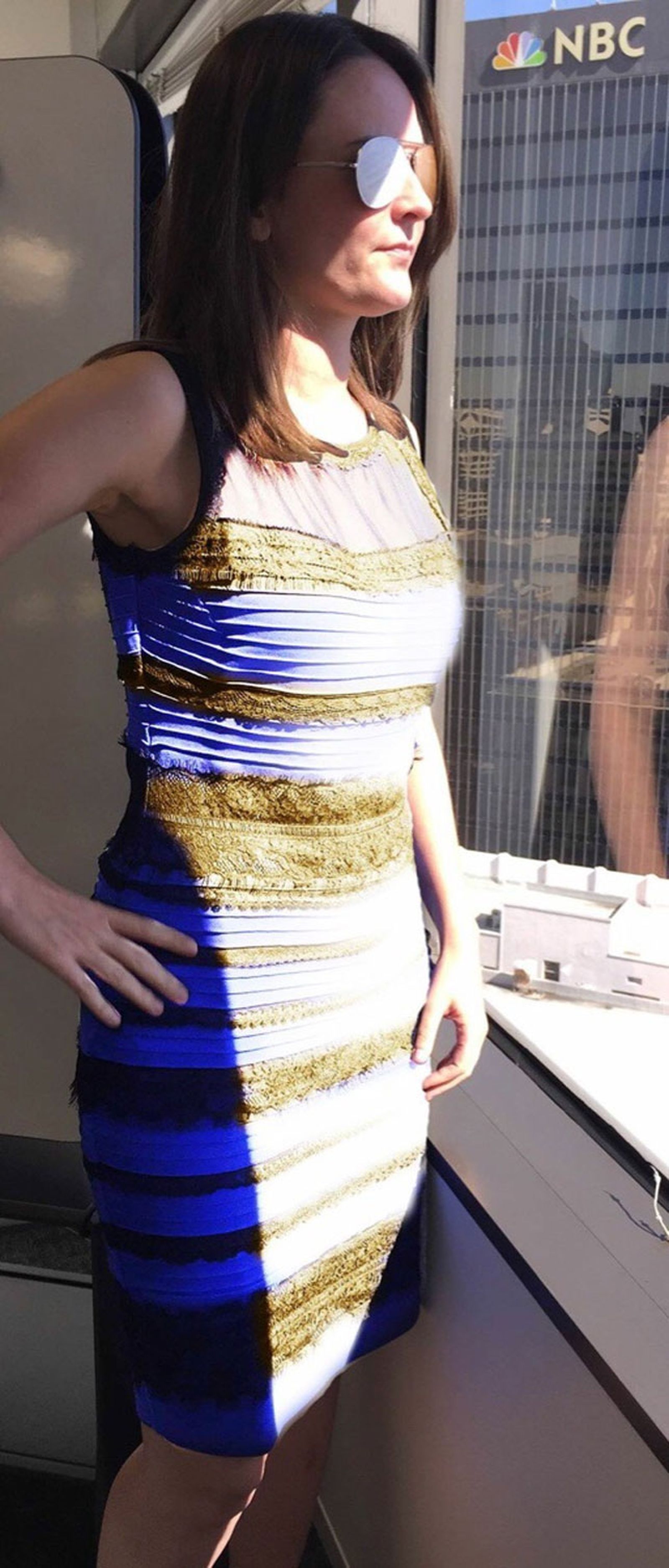I figured it out.
The color temperature in bright sun on a clear day is usually called out as 6000 degrees K.
The color temperature in open shade on a clear day, is usually called out as 9000 degrees K.
The 3000 degree color shift is enough to make a white dress look blue.
The problem being we (humans) have minds that make mental adjustments for changes in light sources. So if we know that the walls in a room are actually white, we see “white” regardless of the light source.
But with the dress, outside of a known environment, will be seen as it actually is.
If any of you remember film rated for “daylight” vs “incandescent type A or Type B”, then using one of the incandescent rated films outdoors would render white items to be seen as blue.
The incandescent file was rated about 2700K and the daylight film was about 5600K, that same 3000 degree spread—enough for the dress in the shade to look blue and the same dress in the sun to look white.
I real life the dress would look all white, our minds making that color shift adjustment. Photos render as white vs blue because cameras live in a world where brains don’t make color adjustments.
So, I figured it out. Drove me nuts for most of the day. Sorry to have burdened you guys.
Packard



